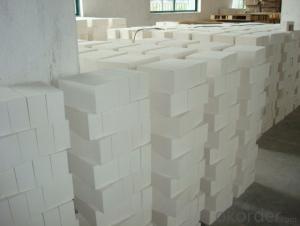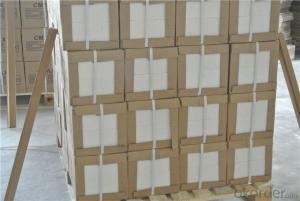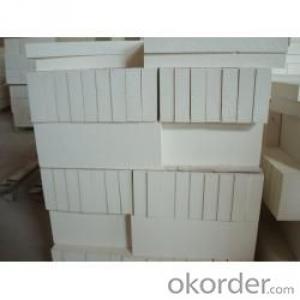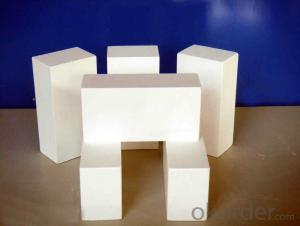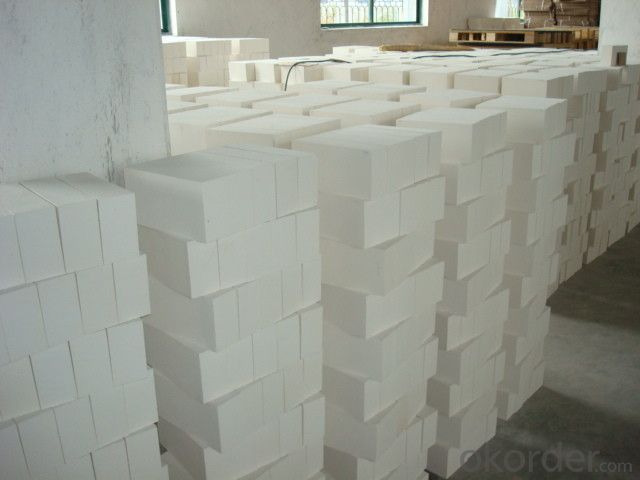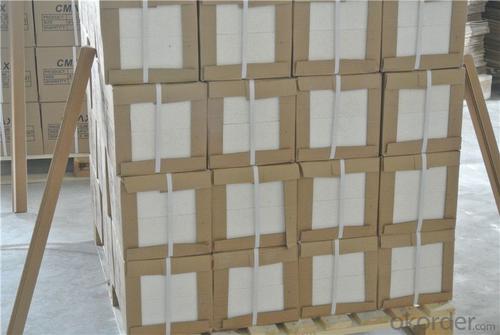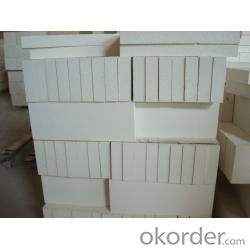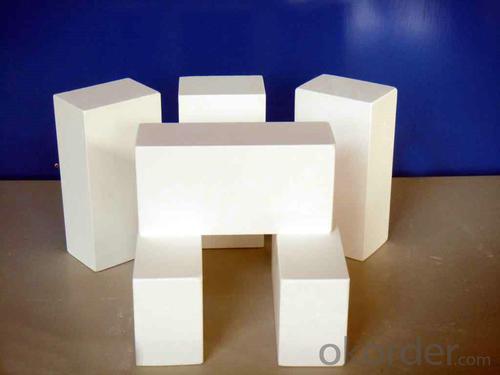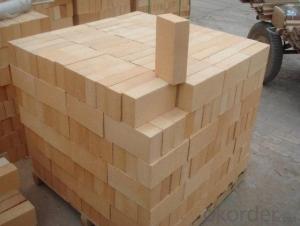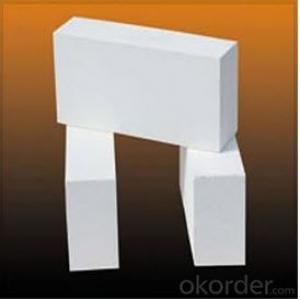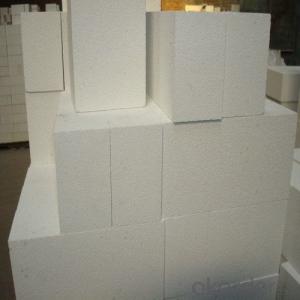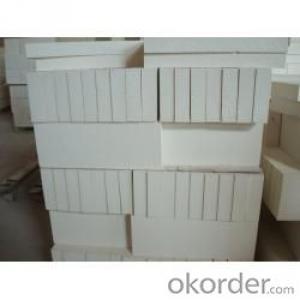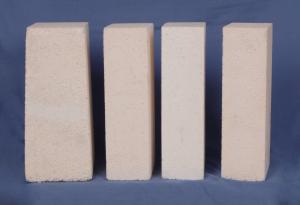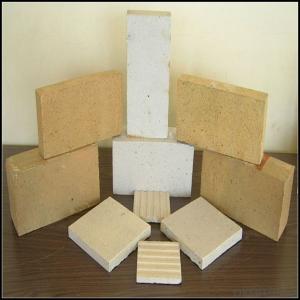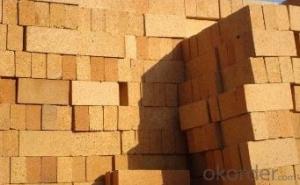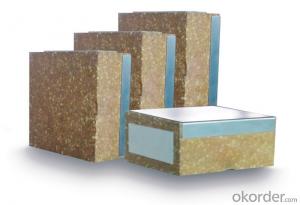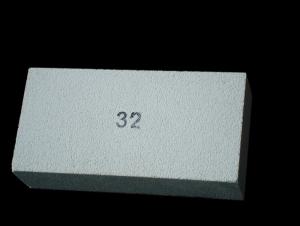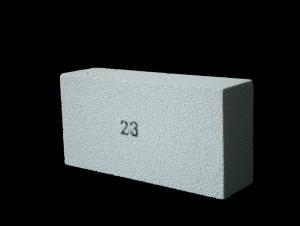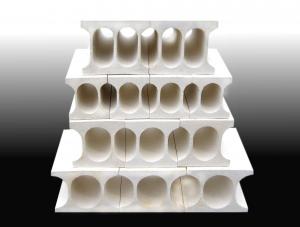Insulating Fire Brick - High Temperature Bubble Alumina Brick
- Loading Port:
- Tianjin
- Payment Terms:
- TT OR LC
- Min Order Qty:
- 2 m.t.
- Supply Capability:
- 1000 m.t./month
OKorder Service Pledge
OKorder Financial Service
You Might Also Like
Bubble Alumina Brick and Insulating Firebrick are high temperature refractory brick, max temp 1800 deg C, used in furnace kiln.
Bubble Alumina Brick and Insulating Firebrick are high temperature refractory brick.
Bubble Alumina Brick. We stock in both 2.5 & 3” sizes. We also carry double bump interlocking anchor styles. For use up to 1800C, these brick have excellent insulating properties as well as high hot strengths.
Insulating firebrick, we carry produces thirteen types of Insulating Fire Brick for use in applications from 2,000°F (1,093°C) to 3,200°F (1,760°C). Each type is formulated to meet specific thermal and physical requirements and after firing is machined to precise tolerances.
Made from high purity refractory clays and other ceramic raw materials, these insulating fire brick contain a carefully graded organic filler which is burned out during manufacture to give a uniform controlled pore structure.
Advantages of bubble alumina brick.
High Insulating Va
The high compressive strength of bubble alumina brick allows for self-supporting structures at elevated temperatures. Insulating fire brick are compatible with dense fire brick and add strength to the whole construction.
Low Heat Storage
Lower heat storage versus dense brick means reduced fuel costs in cyclically operated heating equipment. lue
The light weight and high insulating value of refractory brick make possible thinner furnace walls, improved efficiency and lower operating costs.
Strong
The high compressive strength of bubble alumina brick allows for self-supporting structures at elevated temperatures. Insulating fire brick are compatible with dense fire brick and add strength to the whole construction.
Low Heat Storage
Lower heat storage versus dense brick means reduced fuel costs in cyclically operated heating equipment.
Application
DJM 26 Light Weight Insulating fire brick are used for the lining of converter, alternating current arc furnace, direct Current arc furnace and the ladle slag line, etc.
Company Advantage
(1)Long Insulating Fire Brick manufacture history: 25 years manufacturer
(2)Advanced equipment
(3)Diversification of production standards: ISO ANSI FEPA JIS ASTM
Equipment
1 unit of Ceramic Abrasive (SG Abrasive) pilot production line
1 unit of high-end coated abrasives (abrasive cloth) production line
2 units of Boron Carbide production lines
Q1 What’s the transport method?
A1 FCL delivery goods with wooden pallet or wooden case by sea; If LCL delivery, must with wooden case; Sometimes need open top, flat rack or bulk cargo.
Q2 What’s the required payment term?
A2 Generally 30% TT as the prepayment, 70% TT before delivery. If need, 100% Irrevocable Letter of Credit or negotiation.
Q3 Which country are our products exported to?
A3 Apart from entire Chinese market, the US, Russia, Japan, Korea, Australia and some Southeast Asian Nations.
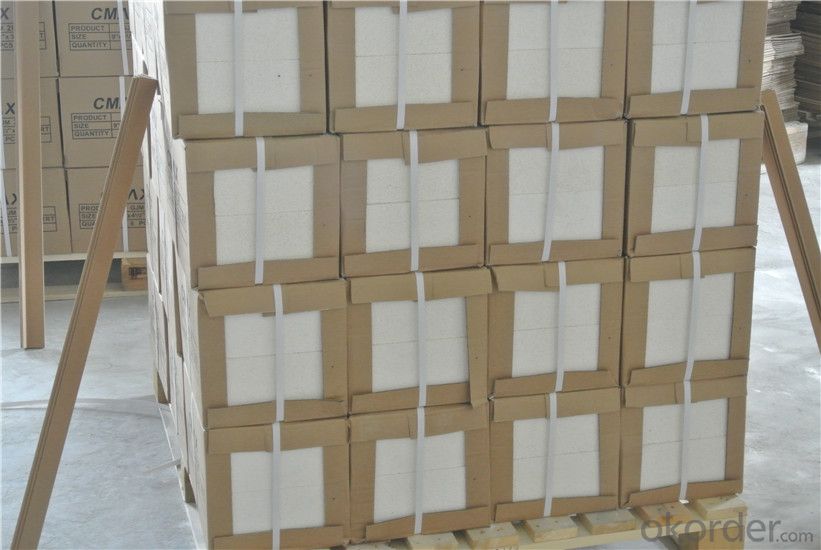
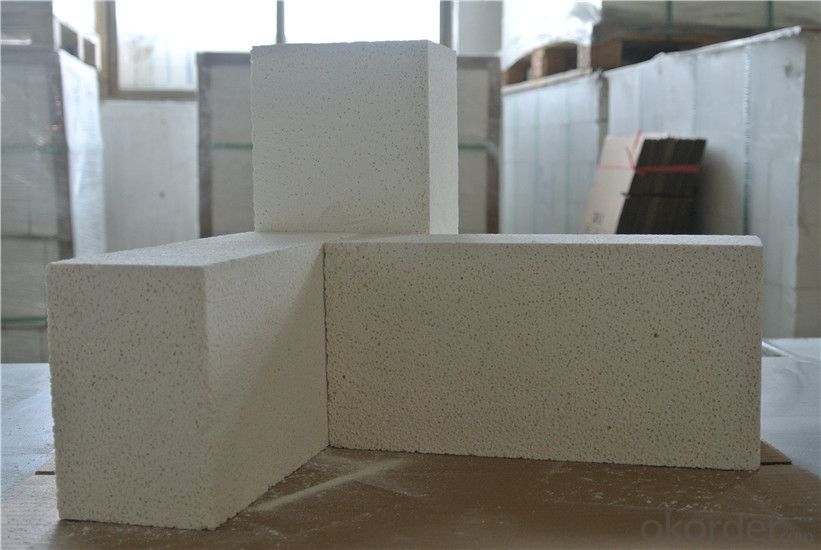
- Q: Can insulating fire bricks be cut or shaped as needed?
- Yes, insulating fire bricks can be cut or shaped as needed. They are typically made from lightweight materials such as ceramic fibers, which can be easily cut using a saw or other cutting tools. Additionally, they can be shaped using a knife or sandpaper to achieve the desired form.
- Q: Are insulating fire bricks suitable for use in chimneys and fireplaces?
- Yes, insulating fire bricks are suitable for use in chimneys and fireplaces. They have excellent thermal insulation properties, which helps to retain heat and prevent the transfer of excessive heat to the surrounding structure. This makes them a safe and efficient choice for lining chimneys and fireplaces, as they can withstand high temperatures and reduce the risk of heat damage.
- Q: Are insulating fire bricks suitable for insulation in steam boilers?
- Yes, insulating fire bricks are suitable for insulation in steam boilers. Insulating fire bricks are made from lightweight materials that have high insulating properties, such as alumina or silica. They are designed to withstand high temperatures and thermal shocks, making them ideal for use in steam boilers where there is constant exposure to heat. Insulating fire bricks have low thermal conductivity, which means they can effectively prevent heat transfer, reducing energy loss and increasing the efficiency of steam boilers. Their high insulation properties also help to maintain consistent temperatures within the boiler, preventing heat fluctuations and minimizing the risk of thermal stress and damage. Furthermore, insulating fire bricks are resistant to corrosion and chemical attacks, ensuring their durability and longevity in steam boiler applications. They are also easy to install and can be cut into different shapes and sizes to fit the specific requirements of the boiler. Overall, insulating fire bricks are an excellent choice for insulation in steam boilers due to their ability to withstand high temperatures, low thermal conductivity, and resistance to corrosion. They help in reducing energy loss, improving efficiency, and ensuring the longevity of the boiler.
- Q: How do insulating fire bricks affect the overall weight capacity of a structure?
- The overall weight capacity of a structure can be significantly impacted by insulating fire bricks. These bricks are designed to be lightweight with high thermal insulation properties, unlike traditional dense firebricks. By incorporating insulating fire bricks, the structure's weight is reduced, allowing for more allocation of weight to other components or materials. This proves advantageous in situations where weight restrictions are important, like in aerospace, automotive, or marine applications. Furthermore, the lightweight nature of insulating fire bricks lessens the load on the foundation and supporting structures. This contributes to preventing structural damage and enhancing the safety and durability of the entire structure. Nevertheless, it is important to note that insulating fire bricks, although lighter, might possess slightly lower compressive strength compared to dense firebricks. Consequently, it is crucial to thoroughly consider the specific requirements of the structure and ensure that the chosen insulating fire bricks can endure the anticipated load and stresses. To summarize, insulating fire bricks have a positive impact on the overall weight capacity of a structure by decreasing its weight and lessening the load on supporting structures. However, it is crucial to consider the specific application and select the appropriate insulating fire bricks to ensure structural integrity and safety.
- Q: Can insulating fire bricks be used in the construction of glassware molds?
- Yes, insulating fire bricks can be used in the construction of glassware molds. Insulating fire bricks are made of lightweight materials that have excellent insulation properties, making them suitable for use in high-temperature applications such as glassware molds. These bricks can withstand the extreme heat generated during the glass molding process and help maintain a consistent temperature within the mold. Additionally, insulating fire bricks have low thermal conductivity, which prevents excessive heat loss and ensures efficient energy usage. Overall, using insulating fire bricks in the construction of glassware molds can provide better heat retention, improved thermal efficiency, and enhanced mold stability, resulting in higher quality glass products.
- Q: Can insulating fire bricks be used in the construction of melting furnaces?
- Insulating fire bricks can indeed be utilized in the construction of melting furnaces. These bricks are specifically designed to withstand high temperatures while possessing excellent thermal conductivity. Their primary purpose is to minimize heat loss and conserve energy, rendering them highly suitable for melting furnaces. Additionally, these bricks are lightweight and easily manageable, providing convenience during construction. They are also capable of effectively retaining heat and maintaining a steady furnace temperature, thus ensuring efficient melting and casting processes. Moreover, insulating fire bricks exhibit resistance to chemical corrosion and mechanical stress, showcasing their durability and reliability for long-term use in melting furnaces. In conclusion, considering their thermal properties, ease of use, and durability, insulating fire bricks are a fitting choice for constructing melting furnaces.
- Q: Can insulating fire bricks be used for insulation in heat recovery systems?
- Yes, insulating fire bricks can be used for insulation in heat recovery systems. Insulating fire bricks are specifically designed to withstand high temperatures and provide effective thermal insulation. They have low thermal conductivity, which means they can minimize heat loss and maximize heat recovery in a system. These bricks are often used in various industrial applications such as kilns, furnaces, and ovens, where temperature control and energy efficiency are important. Therefore, they can be a suitable choice for insulating heat recovery systems, helping to optimize the recovery and utilization of waste heat.
- Q: Are insulating fire bricks resistant to saltwater?
- Insulating fire bricks are typically not resistant to saltwater. Saltwater contains high levels of salt, which can cause corrosion and degradation of the material over time. It is recommended to use refractory materials that are specifically designed to withstand saltwater environments if you are looking for a solution that is resistant to corrosion.
- Q: Are insulating fire bricks resistant to weathering or aging?
- Insulating fire bricks exhibit exceptional resistance to weathering and aging. These bricks are specifically engineered to endure extreme temperatures and harsh environmental conditions. They are composed of top-notch refractory materials, including alumina, silica, and other additives, which confer exceptional thermal insulation properties and strong resistance to corrosion and erosion. The manufacturing process of insulating fire bricks entails meticulous selection of raw materials and precise control of firing temperatures, resulting in a dense and homogeneous structure. This structure effectively prevents moisture and other weathering agents from infiltrating, thus ensuring extended durability and resistance to aging. Moreover, insulating fire bricks are also highly resistant to thermal shock, enabling them to withstand rapid temperature fluctuations without fracturing or disintegrating. This characteristic bolsters their ability to withstand adverse weather conditions. All in all, insulating fire bricks have demonstrated remarkable dependability in diverse applications that involve exposure to weathering elements. They find widespread usage in industries such as steel, ceramic, glass, and cement manufacturing, as well as in high-temperature applications like kilns, furnaces, and chimneys.
- Q: How do insulating fire bricks help reduce heat loss through convection?
- Insulating fire bricks are specifically designed to minimize heat loss through convection. They achieve this by creating a barrier that prevents the movement of air and heat transfer. These bricks are made from lightweight refractory materials, which have low thermal conductivity. This means that they are not good conductors of heat and do not allow heat to easily pass through them. When these bricks are used in construction, they create a layer of insulation that effectively reduces heat transfer by convection. Convection is the process of heat transfer through the movement of air or fluid particles. The insulating fire bricks act as a barrier, preventing the free flow of air and interrupting the convective currents. The bricks are designed with small, interconnected air pockets or pores, which trap air inside them. These air pockets act as insulators and minimize the transfer of heat by convection. The trapped air forms a stagnant layer, reducing the movement of air and preventing the heat from escaping or entering the area. By reducing heat loss through convection, insulating fire bricks help to maintain a stable and comfortable temperature within a structure. They are commonly used in applications where heat insulation is essential, such as in industrial furnaces, kilns, and fireplaces. These bricks not only enhance energy efficiency by reducing heat loss but also contribute to fire safety by preventing the spread of heat to adjacent areas.
Send your message to us
Insulating Fire Brick - High Temperature Bubble Alumina Brick
- Loading Port:
- Tianjin
- Payment Terms:
- TT OR LC
- Min Order Qty:
- 2 m.t.
- Supply Capability:
- 1000 m.t./month
OKorder Service Pledge
OKorder Financial Service
Similar products
Hot products
Hot Searches
Related keywords
